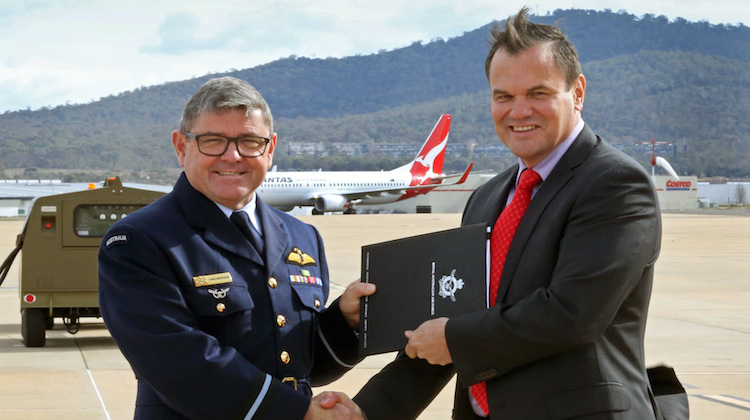
A memorandum of agreement (MoA) between Airservices and the Royal Australian Air Force (RAAF) has cleared the way for the Heron remotely piloted unmanned aircraft system (UAS) to be used in Australian civil airspace.
The Air Force currently has two Heron aircraft, which operate out of RAAF Base Woomera in South Australia. So far, the Heron has only flown in restricted military airspace, Defence said on Friday.
The MoA will enable the Heron to fly in civilian airspace from Rockhampton Airport as part of Exercise Talisman Sabre 2015 in June.
Airservices executive general manager Greg Hood and RAAF Commander of Surveillance and Response Group Air Commodore Chris Westwood signed the MoA in Canberra on Friday.
“The purpose of the MoA is to set out procedures for Airservices Australia and Air Force to work within, and allows the Heron to be safely flown in civil airspace without any significant impact on civil air traffic,” Air Commodore Westwood said in a statement.
“The MoA aids both Airservices and Air Force by facilitating the initial operation and integration of remotely piloted aircraft into civil airspace, based on Air Force’s mature and thorough airworthiness and aviation safety system.”
Hood said the MoA recognised the “changing way that airspace is being used to embrace new technologies”.
“We look forward to continuing to work collaboratively with Defence on the use of this type of technology safely in Australian airspace,” Hood said.

Defence said the Civil Aviation Safety Authority would also monitor the arrangements.
The government announced a six-year, $120 million lease extension in October 2014 that would keep two Heron aircraft in RAAF service until the introduction of the MQ-4C Triton, subject to the satisfactory execution of the US Navy development program.
Triton was intended to complement the Boeing P-8A Poseidon, replacing the AP-3C Orion under AIR 7000. About seven of the high-altitude long-endurance (HALE) aircraft were expected to eventually be based at RAAF Base Edinburgh, north of Adelaide.
The precise number to be acquired by Australia, and their scheduled introduction into service date, would be considered by the government at some point in 2016, following the release of the 2015 Defence White Paper.
















Chris G
says:In contrast to what happened to Germany in European airspace it is good to see the RAAF and ASA making incremental steps towards Triton.
Heron has a 16m wingspan, of 1mtonne flying at 180kmhr up to 9km in altitude for 24 hrs. SOPs between civilian and military authorities need to be proven.
Triton has a 40m wingspan, approaching 15mtonne flying at 600kmhr up to 15km in altitude for 24 hrs. Better situational awareness will need to be maintained to cope with potential conflicts.
Adrian
says:Are they fitted with ACAS so they can take avoiding action the same way airliners can?